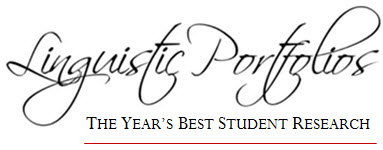
Abstract
This is a comprehensive instrumental account of the phonetic realizations [θ] in L2 Englishes. It involves the analysis of 539 segments and 77 spectrographs of [θ] produced by 10 native speakers of General American English and 67 L2 speakers of English. They all produced the same [θ] segment in the words , , , , and . The quantitative analysis of the impressionistic transcriptions shows that [θ] was produced successfully 208 out of 335 occurrences by non-native speakers 62.08%. The impressionistic data also shows that [θ] was produced as [t̪] 44 times (13.14%), as [s] 36 times (10.74%), as [f] 26 times (7.76%), as [ð] 13 times (3.88%), as [d̪] four times (1.10%), as [z] three times (.89%), and as [r] once (.29%). The Fricative Intelligibility Criterion is used together with confusion findings, relative functional load information, intensity, and center of gravity measurements to assess the intelligibility of L2-accented [θ].
Creative Commons License

This work is licensed under a Creative Commons Attribution-NonCommercial-No Derivative Works 4.0 International License.
Recommended Citation
Koffi, Ettien
(2015)
"The Pronunciation of Voiceless TH in Seven Varieties of L2 Englishes: Focus on Intelligibility,"
Linguistic Portfolios: Vol. 4, Article 2.
Available at:
https://repository.stcloudstate.edu/stcloud_ling/vol4/iss1/2


